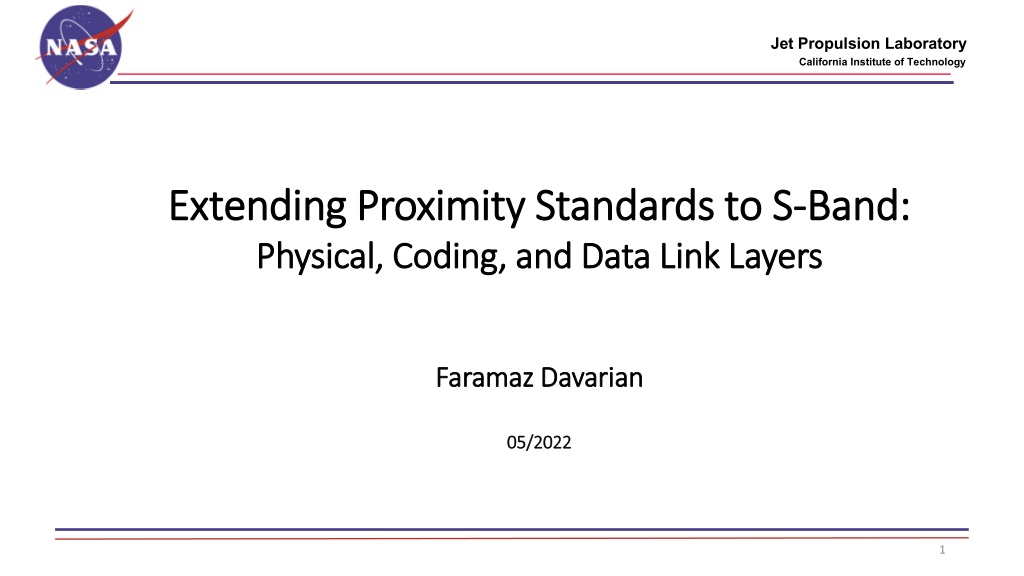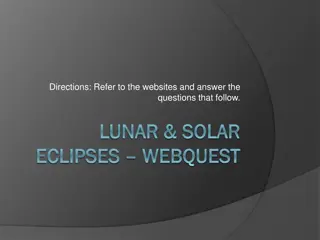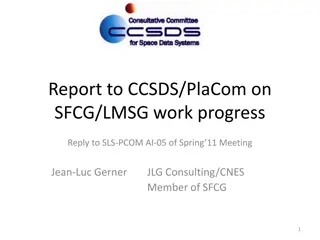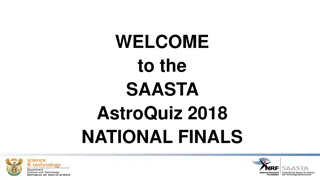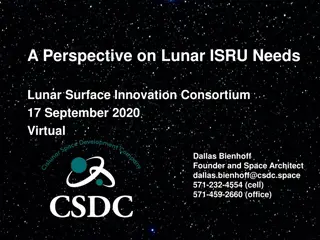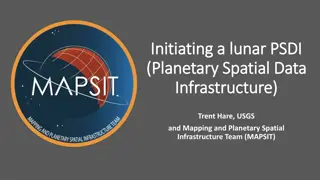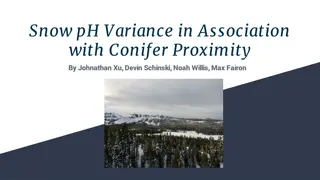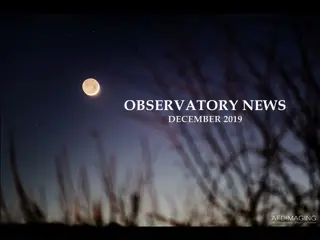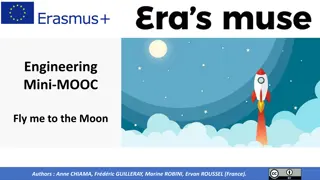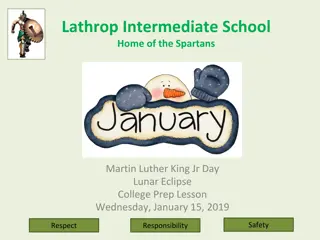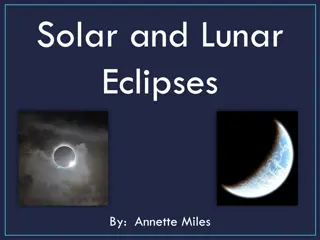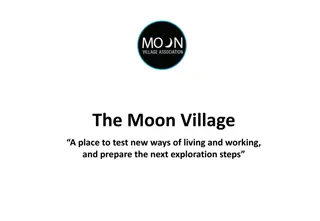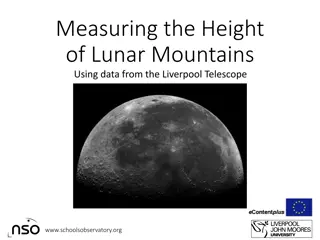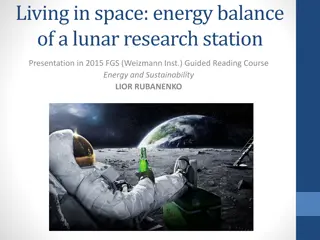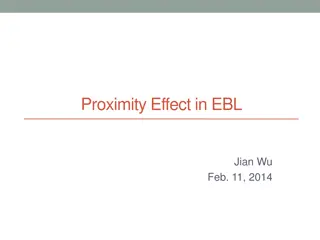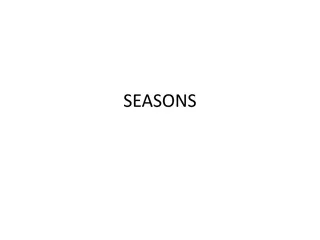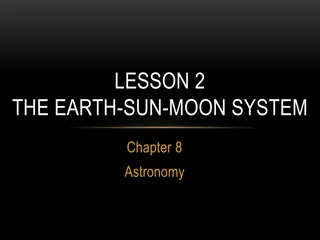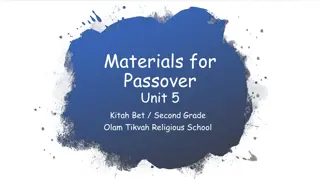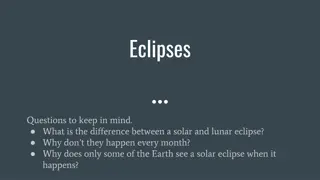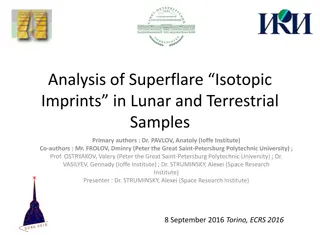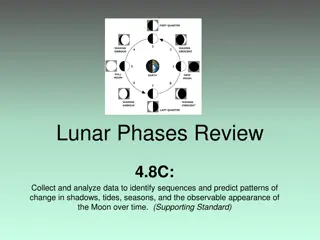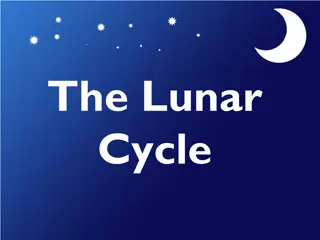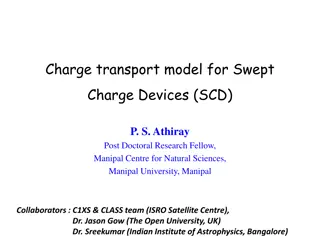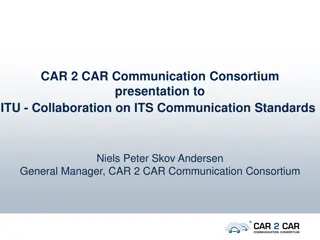Developing Lunar Proximity Standards for Enhanced Communication
Various commercial lunar relay systems are in development, emphasizing the urgent need for standardizing proximity signal formats for efficient communication between lunar payloads. Extending the current CCSDS Proximity-1 Standard to the S-band for the Moon is crucial due to differences in frequency spectrum environments. A new standard would accommodate higher data rates and avoid interference with terrestrial radios, ensuring seamless communication in upcoming lunar missions.
- Lunar relay systems
- Proximity signal formats
- CCSDS Standard extension
- S-band communication
- Lunar communication
Download Presentation

Please find below an Image/Link to download the presentation.
The content on the website is provided AS IS for your information and personal use only. It may not be sold, licensed, or shared on other websites without obtaining consent from the author. Download presentation by click this link. If you encounter any issues during the download, it is possible that the publisher has removed the file from their server.
E N D
Presentation Transcript
Jet Propulsion Laboratory California Institute of Technology Extending Proximity Standards to S Extending Proximity Standards to S- -Band: Physical, Coding, and Data Link Layers Physical, Coding, and Data Link Layers Band: Faramaz Davarian Faramaz Davarian 05/2022 05/2022 1
Motivation A number of Commercial lunar relay systems are under development Intuitive Machines Nova-C will launch together with the Khon1 relay in late 2022 Pathfinder (by SSTL) will launch in early 2025 Andromeda (by Argotec) will lunch in 2025 And more These lunar relay missions need to finalize their proximity signal format very soon NASA s CLPS payloads going to the far side of the Moon need to know the signaling formats for the proximity links Currently a proximity radio is being developed by JPL for these payloads with the first launch early 25 The need for a standard approach to lunar S-band proximity communications is urgent. Inaction will force individual relay missions to adopt their own signaling format, which could create significant interoperability problems in the future 2
CCSDS Proximity-1 Standard The present CCSDS standard applies to the UHF band at Mars At the Moon, UHF usage has limitations in order to protect radio astronomy from harmful interference SFCG has designated the S-band: Return (2200 2290 MHz) , and Forward (2025-2110 MHz) for lunar proximity communications SFCG also has Ka-band designation The Martian frequency spectrum environment is different from the Moon There will be many more users on the Moon Higher proximity data rates are likely to be used at the Moon Lunar closeness to Earth requires avoidance of interference with terrestrial radios (surface and orbit) Spilling over the adjacent band would not cause a problem at Mars because there are no adjacent band users Because of the above differences, an extension of the Proximity-1 standard, with new frequency bands, should be developed for the Moon by CCSDS 3
Lunar Spectrum 2200 2290 MHz Band (return Link) Credit: Dennis Lee (Noe: this chart was prepared a few years ago and it may not have the latest lunar missions) Credit: Dennis Lee (Noe: this chart was prepared a few years ago and it may not have the latest lunar missions) 4
Lunar Pathfinder max symbol rate is 4 Msps (return proximity link) All of 90 MHz will be used by the Pathfinder (see chart below, bi-phase curve) Note that total allocation for the return link is only 90 MHz that must be shared among multiple users Credit: Peter Kinman (CSUF) Pathfinder link establishment through hailing 5
What is Being Proposed for Lunar S-Band Proximity Links 1. Use spectrally efficient waveforms to conserve bandwidth 2. Consider higher coding rates than 0.5 to further conserve bandwidth 3. Use the CCSDS approved Version 4 transfer frame format (USLP) for added flexibility for lunar proximity operations 6
Modulation Tradeoffs Occupied Bandwidth of Waveforms Normalized to the Symbol Rate [CCSDS 413.0-G-3] Eb/No for 10-3 BER Occupied Bandwidth Modulation Type Receiver Type Unfiltered BPSK (for reference only) Integrate and Dump 6.8 dB 20.56 Rs 24x more efficient Baseband Filtered OQPSK/PM Butterworth 6th order BTs=0.5 Integrate and Dump 7.6 dB 0.88 Rs Precoded GMSK BTs=0.25 Viterbi Receiver 7.0 dB 0.86 Rs 7
LDPC Channel Coding Tradeoffs Credit: Ken Andrews Block Size, bits (information bits) Option Rate Comment A 1/2 1,024 Reference Similar SNR performance and similar decoding complexity to the reference 25% more BW efficient than the reference B 2/3 4,096 Best SNR performance; About 3 times more complex than Option B; 25% less BW efficient than Option B Latency is a concern for low data rate links; C 1/2 16, 384 Note: LDPC provides for slicing (long frames can be sliced to fit in multiple code words) 8
USLP vs AOS Frame Format Credit: Greg Kazz USLP unifies link layer protocols Unifying the Link Layer Protocols will reduce development and maintenance costs USLP does not require code alignment with frames Running the data link layer protocol unaligned to the channel code allows more independence between layers USLP is user data driven Uses data driven (Frame Header Signaled) Master Channel Services instead of control via management USLP allows for variable length frames Frame length can be adjusted to suit communication and operations needs USLP allows for a larger spacecraft ID field Greater number of spacecraft require a larger Spacecraft ID field USLP allows for larger frame sizes up to 32x larger Longer Frames reduce handling processing complexities at higher rates USLP allows for longer frame sequence counters Higher rates require longer frame sequence counters for accountability 9
Conclusion: Extend Prox-1 to S-Band Frequencies with the Following Modulation, Coding, and Frame Format # Protocol Recommendation Comment GMSK or All data rates Filtered OQPSK/PM 1 Modulation PCM/Bi-Phase-L Optional for low data rates (<64 kbps) LDPC, r=2/3, k=4096 All data rates * 2 Coding LDPC, r=1/2, k=1024 Optional for low data rates (<64 kbps) 3 Transfer Frame USLP *In addition to the proposed coding options in the above table, other LDPC code rates and block lengths may be considered, if deemed appropriate by CCSDS 10
